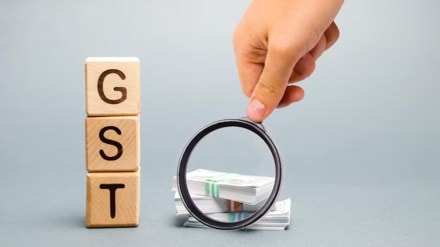By Mahesh Jaising & Tarun Bajaj, Respectively partner and Indirect tax leader and senior advisor, Deloitte India
As India marks the eighth anniversary of the Goods and Services Tax (GST) today, , the narrative around this landmark reform has evolved significantly—from early apprehensions to widespread endorsement. What began on July 1, 2017 as a bold structural overhaul of India’s indirect tax regime has matured into a cornerstone of India’s economic architecture today. The latest findings from Deloitte’s GST@8: Learning from the Past, Defining the Future survey reaffirm this trajectory, reflecting strong industry confidence and an urgent call for next-phase reforms.
At its core, GST replaced a framework of central and state levies with a unified, transparent, and technology-driven tax framework. Over the past eight years, it has streamlined tax administration, eliminated cascading taxes, improved interstate trade and formalised the economy.
Digitisation has been the hallmark of GST’s success. E-invoicing, auto-populated returns, and real-time data integration via e-way bills have significantly reduced manual interventions and compliance ambiguities. According to the Deloitte survey, an overwhelming 85% of industry respondents now view GST positively—up from 59% in 2022. This shift is not just a vote of confidence but a testament to the regime’s growing maturity and effectiveness.
Industry leaders across sectors have lauded bold reforms that have made compliance more predictable—automated and aligned with business realities. It is interesting to note that nearly half of all respondents acknowledged the government’s responsiveness at the policy level, particularly through timely clarifications and taxpayer-friendly circulars. These efforts reflect a more collaborative approach between the tax administration and businesses, fostering mutual trust and responsive governance.
Catalyst for economic growth
Beyond tax policy, GST has emerged as a vital enabler of economic efficiency. The elimination of tax barriers between states has unlocked logistics efficiencies, reduced transit times, and lowered operational costs—especially for the manufacturing, fast-moving consumer goods, and e-commerce sectors. These gains are not just microeconomic—they contribute directly to India’s GDP by enhancing competitiveness and promoting scale.
The formalisation of the economy, driven by mandatory invoice trails and credit linkages, has expanded the tax base and strengthened fiscal health. It has also empowered small and medium enterprises (SMEs) to integrate into organised supply chains, thereby improving credit access and market reach.
Additionally, the increased digitisation has empowered SMEs to participate more confidently in the formal economy. The micro, small, and medium enterprise (MSME) sector has seen an improvement in sentiment, with 82% of MSME respondents now expressing a positive GST experience. These seem to be against the backdrop of the Quarterly Return Monthly Payment (QRMP) scheme, offering quarterly return filing with monthly payments coupled with initiatives such as simplified registration; reduced tax collected at source (TCS) rates that have empowered MSME enterprises, echoing the spirit of Atmanirbhar Bharat by deepening grassroots economic participation; streamlined investigation and audit guidelines.
Notably, GST collections have reached record highs, surpassing `2 lakh crore per month on several occasions, a testament to both improved compliance and economic resilience.
The road ahead: GST 2.0
While there has been progress, the GST journey is poised for the next set of reforms as well as addressing certain specific operational issues. Ground-level issues—such as refund delays, income-tax class (ITC) mismatches, audit overlaps, and complex rate structures—continue to challenge businesses. Deloitte’s survey highlights the top reform priorities identified by industry stakeholders—export liberalisation, unlocking working capital, and removal of ITC restrictions to enhance competitiveness; rate rationalisation to address inverted duty structures and improve clarity; simplified audits and dispute resolution mechanisms; and faster and more seamless registration as well as refund processing.
These are not just technical fixes, they are essential steps to making GST more agile, business-friendly, and future-ready.
From reform to resilience
GST@8 is more than a policy milestone—it is a reflection of India’s evolving governance ethos. It embodies the shift toward a data-led, cooperative and responsive fiscal system. As the GST Council and policymakers look ahead, the focus must remain on driving “GST 2.0”—a version that is not just structurally sound but also empathetic to the needs of businesses across sizes and sectors.
As GST enters its next phase, it is no longer just a compliance system—it is fast becoming a key driver of India’s competitiveness. With focused improvements in working capital access, dispute resolution, and digital taxpayer services, GST has the potential to fuel domestic investment, power business expansion, and further India’s journey towards becoming a self-reliant, innovation-led and globally integrated economy.
The story of GST is ultimately the story of India’s ambition to create a seamless, scalable and sustainable economy. And as the survey findings suggest, the Indian industry is not just ready—but eager—for the next chapter.
